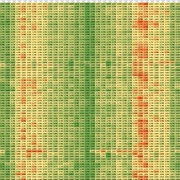anko said:
elm70 said:
For what you stated somewhere else ... it happen many time that your PHEV got as low as 16% SOC and kick on extra power ... since the Parallel mode was still not able to cope with the EV load.
Perhaps. Although, normally the car switches to serial mode at 20% and then SOC will go back up. Very seldom I have been below 20%. But maybe once is all it takes .... :shock:
elm70 said:
Considering the errors on SOC from the PHEV ...
What errors are you referring to?
As you know the PHEV can't know the real SOC ... it is an educated guess what the car make for know the SOC ... especially if ICE is running.
As you may have seen .. somebody .. like magic after a "wrong" battery smoothing procedure got the SOH from 80% back to 100%
A wrong SOH in the PHEV temporary configuration cause a wrong SOC especially at low level of SOC
Apparently our PHEV calculate the SOC .. by knowing SOH .. or better knowing the "actual" Ah at 100% SOC ... and then the PHEV monitor the current going in and out from the battery pack for determinate the real time SOC while the PHEV is moving.
So .. we have the error from SOH which possibly is optimistic .. plus monitoring the current from and to the battery does cause extra error ... so .. it is possible to bring the real SOC below the designed limits.
For instance ... via a wrong battery smoothing .. is possible to assign 100% SOH, when in reality the car has only 80% SOH .. as consequence ... the PEHV will allow to discharge 70% of the theoretical 38Ah battery capacity ... so 26.6Ah discharge are allowed .. but the real SOH was 80%, so only 30.4Ah capacity .. this means that due to a wrong SOH the battery can be drain down to 12.5% SOC ... and this is what I believe did happen multiple times to our "friend" in Australia, until the PHEV did readjust automatically the SOH
Anyhow ... I know that a very wrong SOH was never a problem on your car ... but if SOH is reduced, is because the PHEV detect (with a delay) that the real SOH is below what was previously guessed by the car.
So .. with an optimistic SOH, with all the error on measuring current flow ... with going down to SOC 16% or 20% due to towing .. the risk to have reach a very low SOC is possible
As far as I know .. the PHEv need 2h of rest for readjust the SOC with a more accurate value .. so if towing did happen on long trip without any pause over 2h ... it is possible that SOC has been below the designed values.
I also believe that Mitsubishi is aware of the error in the SOH and SOC "guessing" .. and for this reason .. they assume that our battery is only 38Ah as new, instead as 40Ah (which is the real capacity) .. and as well .. they assume 30% of SOC is when voltage is ~3.81v .. which in reality the SOC for a Li-Ion cell at this voltage is higher then 30% .. all these buffers are for avoid to over discharge the main battery ... but ... when bringing down the theoretical SOC below 20% ... it is possible to reach undesired real SOC level.




























